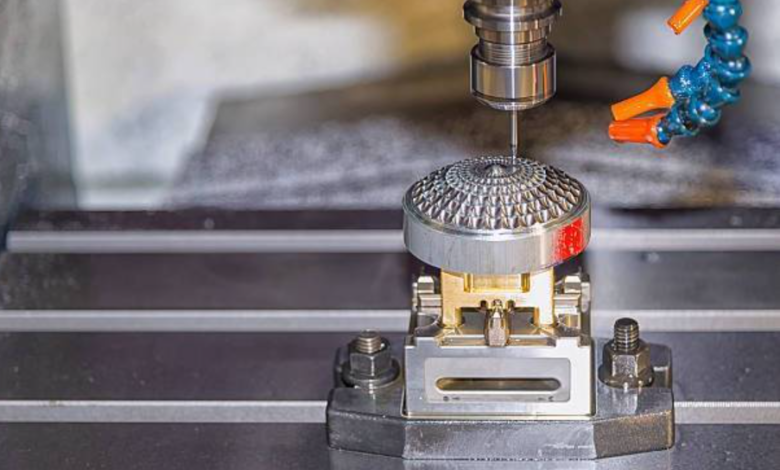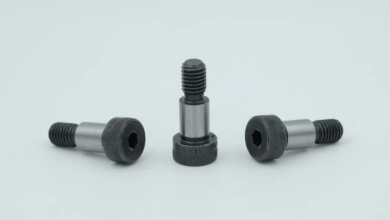The Power of Precision with a 5 axis CNC machine

In the ever-evolving field of modern manufacturing, efficiency, precision, and flexibility are non-negotiable. One of the key innovations enabling these traits in machining is the 5 axis CNC machine. Unlike traditional machining setups that rely on three axes of movement, this advanced technology provides enhanced capabilities by introducing two additional axes. This results in unmatched control over complex part production and is fast becoming a standard in industries that demand high-performance solutions.
This article dives deep into what makes a 5 axis CNC machine an indispensable asset for today’s manufacturers, how it works, where it shines, and what to consider when adding one to your operations.
What is a 5 axis CNC machine?
A 5 axis CNC machine refers to a computer-controlled tool that can move a cutting tool or part along five different axes simultaneously. The basic three axes—X (left/right), Y (forward/backward), and Z (up/down)—are augmented by two rotational axes. These can either rotate the part or tilt the tool itself, depending on the machine configuration.
This added flexibility means that manufacturers can work on complex geometries and undercuts with ease, all while minimizing the need for multiple setups. The machine continuously adjusts the orientation of the cutting tool, allowing it to make precise cuts from virtually any angle.
How Does it Work?
The functioning of a 5 axis CNC machine is based on combining linear and rotational motion. It uses CAM (computer-aided manufacturing) software to translate 3D CAD (computer-aided design) models into toolpaths. These paths are executed by the machine, which synchronizes movements across all five axes.
The result is seamless machining of intricate components in a single setup. Instead of having to re-clamp or reposition a part multiple times, the 5-axis machine handles it all in one go—saving both time and labor.
Key Benefits of a 5 axis CNC machine
1. Reduced Setup Time
With the ability to approach the part from any direction, there’s no need to stop and reposition. This reduces downtime between processes and enhances overall workflow.
2. Enhanced Accuracy
Each time a part is repositioned, there’s a chance for deviation. Since a 5 axis CNC machine minimizes manual handling, it maintains extremely tight tolerances and consistency across parts.
3. Complex Geometry Capabilities
Designs that would be difficult or impossible with a 3-axis machine—like impellers, orthopedic implants, or turbine blades—can be machined with ease.
4. Superior Surface Finish
Maintaining optimal tool orientation results in smoother surfaces, reducing the need for finishing processes like sanding or polishing.
5. Cost Efficiency Over Time
While the initial investment may be high, the reduction in setups, rework, and tool wear ultimately leads to lower long-term production costs.
See also: Bi LED Lens Technology: The Future of Night Driving from the Best LED Headlight Brand
Industrial Applications
A 5 axis CNC machine has wide-ranging applications across multiple industries:
- Aerospace: Used to fabricate parts like jet engine components, wing spars, and control systems that require absolute precision.
- Medical: Essential in producing orthopedic implants, surgical instruments, and dental prosthetics that must meet strict quality standards.
- Automotive: Utilized for crafting engine parts, molds, and custom racing components.
- Energy Sector: Employed in manufacturing blades for turbines and high-pressure valve components.
- Tool and Die Making: Perfect for developing molds, dies, and fixtures with intricate cavity structures.
In short, if precision and complexity are critical, a 5 axis CNC machine is the answer.
Types of 5 axis CNC Machine Configurations
There are several machine configurations, each offering distinct advantages based on application:
• Head-Head: Both rotational axes are in the cutting head. This configuration allows for better tool movement and is excellent for lighter parts.
• Table-Table: The part rotates along two axes. This is ideal for heavier workpieces that remain stationary while the table adjusts orientation.
• Table-Head: A hybrid design that combines rotary movement from both the part and the spindle. It’s flexible and widely used across industries.
Choosing the right configuration depends on your production requirements, part size, and material type.
Factors to Consider Before Buying
Before investing in a 5 axis CNC machine, assess the following:
• Machine Travel
Determine the largest parts you need to produce and ensure the machine’s axis travel supports those dimensions.
• Spindle Specifications
Select a spindle with the right speed and torque based on the materials you’ll machine. For example, harder metals require more torque, while soft materials benefit from higher RPMs.
• Control System
Popular options include FANUC, Siemens, and Heidenhain. Each offers user-friendly interfaces and powerful capabilities, so choose one your team is comfortable with or can be trained on easily.
• CAM Software Compatibility
Make sure the machine works with CAM programs like Mastercam, Fusion 360, or HyperMill, which allow for advanced 5-axis programming and simulation.
Top Brands to Consider
If you’re shopping for a 5 axis CNC machine here are some well-established brands known for quality:
- Haas Automation: Offers affordable, U.S.-based machines perfect for job shops and schools.
- DMG Mori: Known for high-end, precise, and durable machines.
- Mazak: A global leader offering excellent performance and reliability.
- Hurco: Good for small- to mid-sized manufacturers with easy programming interfaces.
- Okuma: Delivers long-lasting machines with powerful control systems.
Each brand has models tailored for different industries, so take the time to evaluate which aligns with your specific goals.
Final Thoughts
The 5 axis CNC machine is not just another piece of equipment—it’s a strategic tool that can significantly boost your production capabilities. Its ability to create complex geometries in a single setup, reduce human error, and increase overall efficiency makes it essential for competitive manufacturing.
Whether you’re looking to improve productivity, take on more intricate projects, or expand into new markets, a 5 axis CNC machine is a future-focused investment. With the right training, support, and planning, this technology will help you meet modern demands with unmatched precision.
Now is the time to embrace the next level of machining. The 5 axis CNC machine offers the precision, versatility, and speed your operations need to grow and compete globally.




